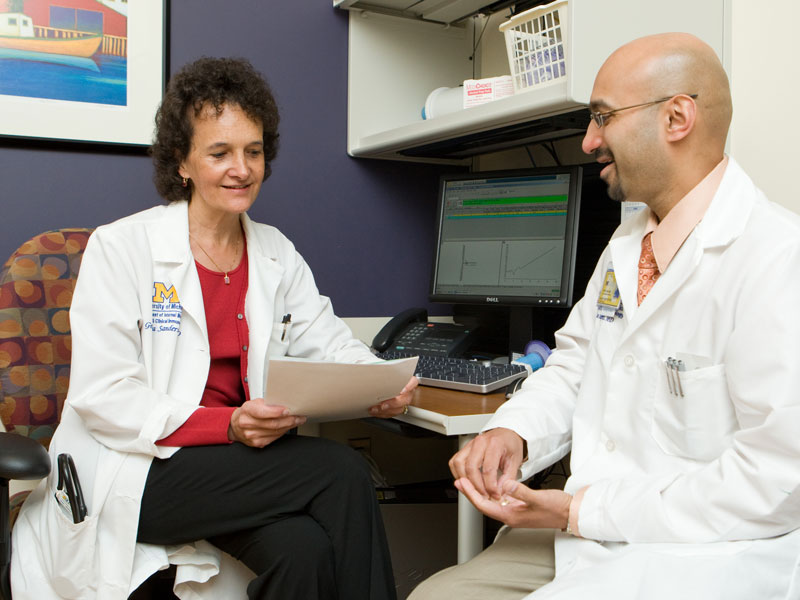What areas of food allergy are you currently investigating?
I developed a University of Michigan food allergy registry using an internet-based questionnaire to obtain detailed information that we cannot get from a patient’s chart, and identify a pool of patients who are interested in learning about research opportunities as they develop. It is very hard to obtain the depth of information we’d like to get about these patients any other way.
This well-defined population will be a valuable tool for researchers in the Mary H. Weiser Food Allergy Center interested in doing translational studies. In addition, we can use the database to look at clinical research questions, including trends in food allergies over time, causal pathways to food allergy, and outcomes of food challenges, among other things.
We are participating in several clinical trials of peanut immunotherapy. The goal of these immunotherapy trials is to prevent serious consequences of an accidental peanut ingestion. These trials include the use of oral immunotherapy, epicutaneous (patch) immunotherapy, sublingual drop immunotherapy, and the addition of biologics to decrease side effects and increase the effectiveness of these products.
In addition, within the Allergy Division we are looking at clinical problems and outcomes, including multiple food intolerance syndrome, FPIES, food-related anxiety, and the real life outcomes of current feeding and testing guidelines.
What hope does your research represent for families?
It was very exciting to see the sense of relief on parents’ faces as we reached the end of the first oral peanut immunotherapy trial and they saw that their child would tolerate a challenge of 600 milligrams, 1,000 milligrams or even 2,000 milligrams of peanut protein (a peanut has 300-350 milligrams of protein).
That’s amazing.
What direction do you see your research taking in the future?
We will continue to be involved in clinical trials of food immunotherapy. This is so important to our patients. We hope to expand these to include milk and egg in the future, possibly other foods, as well as new forms and combinations of immunotherapy.
I am excited about the prospect of starting translational research projects with the scientists in the Weiser Food Allergy Center. The work they are doing is very exciting, and we have begun to have preliminary discussions of projects to determine how their laboratory research results will translate to patients with food allergies.
We will continue to investigate clinical problems and outcomes in patients with food allergies and related gastrointestinal conditions. This will include projects initiated within our division as well as collaboration with other groups within the University of Michigan, other academic centers, and as a member of the FARE Clinical Network Centers of Excellence.
In particular, we are very interested in the psychosocial aspects of food allergy and how we can prevent the anxiety, depression and decreased quality of life that is so often seen in the patient with food allergy and their family members.
We have recently hired a social worker, thanks to a grant through the Weiser Center, and we will be looking at the role of early intervention to decrease these psychosocial stresses.

